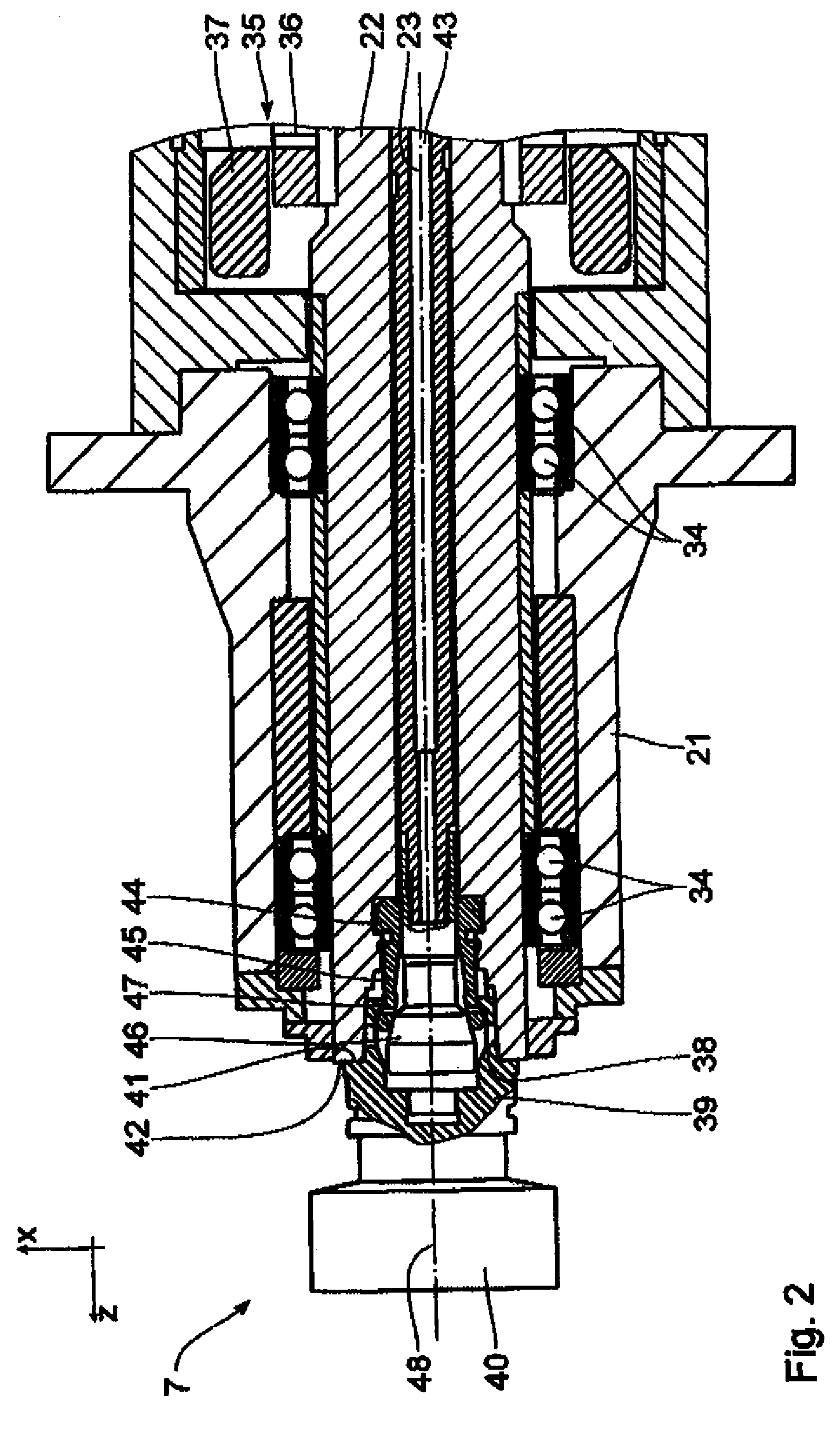Method for testing the fit or imbalance of a tool
a technology of tool fit and imbalance, applied in the direction of maintenance and safety accessories, measurement/indication equipment, automatic control devices, etc., can solve the problems of a relatively long check-in procedure and other problems, and achieve the effect of simple and rapid method
- Summary
- Abstract
- Description
- Claims
- Application Information
AI Technical Summary
Benefits of technology
Problems solved by technology
Method used
Image
Examples
Embodiment Construction
[0026]The machine tool shown in FIG. 1 has a stand 1 which, seen in the horizontal z-direction, is rectangular, that is, approximately square, and is formed by a frame and by vertical side supports 2, 3 extending in the y-direction and by a respective horizontal upper cross spar 4 and lower spar 5 extending in the x-direction and joining these supports 2, 3. The side supports 2, 3 and the cross spars 4, 5 are formed by hollow profiles and enclose an interior 6 which is open at both ends seen in the z-direction, that is, in particular towards a work area 7. The stand 1 is supported on a foundation or a foundation plate 9 by an underframe 8.
[0027]An x-slide 10 which is also configured in the manner of a frame is positioned to be movable in the x-direction on the end face of the stand 1 facing the work area 7. A respective x-guide rail 11, on which the x-slide 10 is guided, is positioned on the cross spars 4, 5. The x-slide 10 is driven by an x-motor 12 via an x-axis spindle 13 extendi...
PUM
| Property | Measurement | Unit |
|---|---|---|
| distance | aaaaa | aaaaa |
| pressure | aaaaa | aaaaa |
| time | aaaaa | aaaaa |
Abstract
Description
Claims
Application Information
 Login to View More
Login to View More - R&D
- Intellectual Property
- Life Sciences
- Materials
- Tech Scout
- Unparalleled Data Quality
- Higher Quality Content
- 60% Fewer Hallucinations
Browse by: Latest US Patents, China's latest patents, Technical Efficacy Thesaurus, Application Domain, Technology Topic, Popular Technical Reports.
© 2025 PatSnap. All rights reserved.Legal|Privacy policy|Modern Slavery Act Transparency Statement|Sitemap|About US| Contact US: help@patsnap.com



